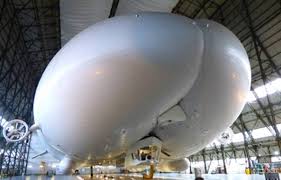
Breaking News
 FULL REPLAY: President Trump Delivers an Address to the Nation - 12/17/25
FULL REPLAY: President Trump Delivers an Address to the Nation - 12/17/25
 MELANIA, the film, exclusively in theaters worldwide on January 30th, 2026.
MELANIA, the film, exclusively in theaters worldwide on January 30th, 2026.
Top Tech News
 This tiny dev board is packed with features for ambitious makers
This tiny dev board is packed with features for ambitious makers
 Scientists Discover Gel to Regrow Tooth Enamel
Scientists Discover Gel to Regrow Tooth Enamel
 Vitamin C and Dandelion Root Killing Cancer Cells -- as Former CDC Director Calls for COVID-19...
Vitamin C and Dandelion Root Killing Cancer Cells -- as Former CDC Director Calls for COVID-19...
 Galactic Brain: US firm plans space-based data centers, power grid to challenge China
Galactic Brain: US firm plans space-based data centers, power grid to challenge China
 A microbial cleanup for glyphosate just earned a patent. Here's why that matters
A microbial cleanup for glyphosate just earned a patent. Here's why that matters
 Japan Breaks Internet Speed Record with 5 Million Times Faster Data Transfer
Japan Breaks Internet Speed Record with 5 Million Times Faster Data Transfer
 Advanced Propulsion Resources Part 1 of 2
Advanced Propulsion Resources Part 1 of 2
 PulsarFusion a forward-thinking UK aerospace company, is pushing the boundaries of space travel...
PulsarFusion a forward-thinking UK aerospace company, is pushing the boundaries of space travel...
 Dinky little laser box throws big-screen entertainment from inches away
Dinky little laser box throws big-screen entertainment from inches away
 'World's first' sodium-ion flashlight shines bright even at -40 ºF
'World's first' sodium-ion flashlight shines bright even at -40 ºF
Hybrid Air Vehicles will no longer use its 'flying bum' prototype airship

A couple of years ago, UK-based Hybrid Air Vehicles captivated the world when it unveiled the Airlander 10, a lighter-than-air airship designed as an alternative to airplanes and helicopters. Now, according to The Guardian, that first prototype won't take to the skies again, as the company says that it "does not plan to fly the prototype aircraft again."
The Airlander 10, nicknamed the "flying bum," was originally designed by the US Army in 2010 as a reconnaissance and surveillance platform (called the Long Endurance Multi-intelligence Vehicle), one that could remain aloft for weeks at a time. When budget cuts left the project with a questionable future, Hybrid Air Vehicles purchased the prototype and brought it to the UK, with the intent to convert it for the civilian marketplace, carrying cargo and passengers. Made of carbon fiber, kevlar, and mylar, the vehicle is filled with helium and uses diesel engines to take off, steer, and land.

 The Prime Directive is Evil
The Prime Directive is Evil
 Don't Worry About Bitcoin
Don't Worry About Bitcoin

